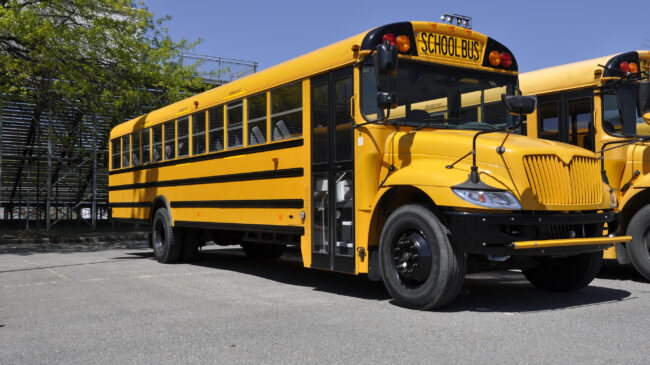Across the country, school bus driver shortages are limiting transportation services in public school districts and straining families. Adding to these challenges is the fact that as charter schools and public school open enrollment options continue to grow, so will the distance students travel to get to the school of their choice.
Without viable transportation options, some families can’t reap the benefits of school choice even if they want to. States can pass laws to allow students to enroll in public schools outside of their zip codes — but those opportunities are meaningful only if families can afford to make the trip.
While solving the transportation puzzle is as much a logistical challenge as it is a policy one, one thing is clear: Traditional yellow school bus routes alone won’t cut it.
K-12 school transportation is one of the most regulated sectors in the nation’s economy. At the federal level alone, at least 20 congressional committees and federal agencies can promulgate laws and regulations that directly affect the industry. Generally, these laws and rules are related to safety standards for school buses as well as the vehicles’ sales and manufacturing. States impose additional requirements regarding who qualifies for K-12 school transportation, how it’s paid for and the types of vehicles public school districts can use.
Understandably, these heavy regulations aim to maximize student safety. But they aren’t without their tradeoffs.
First, federal and state rules heavily limit the types of vehicles districts can employ for school transportation. For instance, according to research from Bellwether Education Partners, only eight states allow for the use of smaller passenger vans for carrying children to and from school. And even in this small group of states that don’t limit themselves to big yellow buses, the availability of alternative vehicles is severely restricted by federal regulations prohibiting the sale of any vehicles to schools, public or private, that don’t meet the definition of a “school bus” determined by the National Highway Transportation Safety Administration. The agency only allows for seven types of buses to be sold for the purpose of transporting students to and from school. These are specialized vehicles that leave schools with limited choices, and myriad regulations concern every aspect of their design, from stop safety arms to seat size.
State laws also make it difficult to accommodate students who cross residential assignment and district boundaries. According to a 2020 paper published by EdChoice, only six states require transportation services for any student enrolled in a public school district outside their own at a level roughly equivalent to what districts must provide for students who live within their boundaries. In most cases, state laws either don’t address who is responsible for school transportation when students cross district lines or put the onus on the families.
Of course, districts can’t be expected to provide whatever level of transportation service nonresident families might desire — that would be unreasonable. But if a district is prepared to receive the education funds that accompany a new enrollee from outside its boundaries, some level of transportation support should be provided for that student, ideally by the district.
In the same way that schools are expected to use a students’ education dollars to teach them, they should provide transportation services or, at least, funding to help the family organize alternatives.
Wisconsin, for instance, places responsibility for transportation across district boundaries on parents, but there is state reimbursement of up to $1,200 a year for low-income families who participate in interdistrict school choice. While the policy isn’t perfect, it prudently recognizes both district limitations in providing transportation services and families’ limitations in paying out of pocket to get their kids to a school that serves them best.
In addition to clearing away policy barriers that restrict transportation access for students exercising school choice, state legislators should also allow districts to look beyond big yellow buses. While federal regulations make it difficult for school districts to purchase a more diverse fleet of vehicles, states like Arizona now provide financial incentives for school districts to partner with ridesharing companies like HopSkipDrive, which specializes in school transportation.
HopSkipDrive operates similarly to other ridesharing companies like Uber, albeit with more thoroughly vetted drivers who can use any four-door vehicle that’s less than 10 years old. The company offers specialized services that the yellow school bus system can’t efficiently provide, such as transportation for individual students with disabilities or for small groups of children to schools of choice or sporting events.
No silver bullet will solve the transportation challenges brought about by increasing public school choice. But if state policymakers place greater responsibility for transportation on public education providers and give school districts greater flexibility to find solutions, school choice will be more attainable for more families.
A version of this column previously appeared in the 74.

